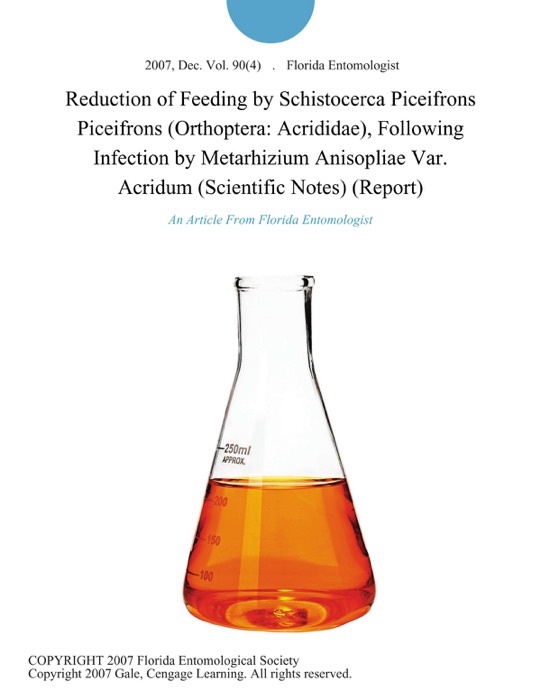(Download) "Reduction of Feeding by Schistocerca Piceifrons Piceifrons (Orthoptera: Acrididae), Following Infection by Metarhizium Anisopliae Var. Acridum (Scientific Notes) (Report)" by Florida Entomologist ~ eBook PDF Kindle ePub Free

eBook details
- Title: Reduction of Feeding by Schistocerca Piceifrons Piceifrons (Orthoptera: Acrididae), Following Infection by Metarhizium Anisopliae Var. Acridum (Scientific Notes) (Report)
- Author : Florida Entomologist
- Release Date : January 01, 2007
- Genre: Life Sciences,Books,Science & Nature,
- Pages : * pages
- Size : 205 KB
Description
The Central American locust, Schistocerca piceifrons ssp. Piceifrons (Walker), often becomes a major pest of staple and cash crops in Mexico and Central America (Barrientos-Lozano et al. 2002). In 1993, laboratory and field studies were initiated to develop a biological control strategy for S. piceifrons. The National Centre for Biological Control (Centro Nacional de Referencia de Control Biologico-CNRCB) has in its entomopathogen collection 35 isolates of Metarhizium anisopliae var. acridum (M. a. acridum) from S. piceifrons in Mexico. Our laboratory studies have shown that the isolates MaPL32 and MaPL40 are 2 of the most virulent against S. piceifrons (Barrientos-Lozano et al. 2002). Field trials with M. a. acridum oil-formulated spores have demonstrated effective control of S. gregaria Forskal in Africa (Langewald et al. 1997), Locusta migratoria (L.) and Chortoicetes terminifera (Walker) in Australia (Hunter et al. 1999, 2001), Rammatocerus schistocercoides (Rehn) in Brazil (Magalhaes et al. 2001) and S. piceifrons in Mexico (Hernandez-Velazquez et al. 2003). One of the perceived disadvantages, evident in these trials, is the length of time (13 to 14 d) that the target insect takes to die after the application. However, in practical terms, successful control of locust is reflected by a reduction in food consumption; a locust that has ceased to feed due to infection is no longer a significant pest (Moore et al. 1992). Studies by Moore et al. (1992) and Seyoum et al. (1994) both reported significant reductions in feeding by S. gregaria following infection with M. a. acridum; similar results were also observed with the grasshopper Zonocerus variegatus (L.) (Thomas et al. 1997). All of these reported studies were carried out using a high dose of the pathogen, in some cases with few insects per treatment, without controls, and a mixture of instars. The aim of the present work was to examine the effect of a conidia low dose (6 x [10.sup.4]) per S. piceifrons adult on both feeding rate and feces production.